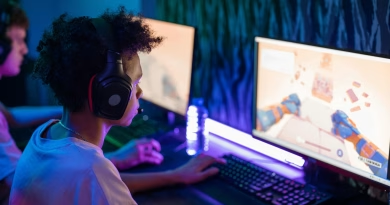The Business of Gaming Skins: Why Virtual Fashion Is a Goldmine
Once dismissed as “just cosmetic,” gaming skins have quietly become the backbone of modern game monetization. In 2025, virtual fashion isn’t just about flexing on the battlefield—it’s a multi-billion-dollar business model that’s redefining how studios design, market, and profit from their games.
If you’ve ever bought a Fortnite outfit, a Valorant gun wrap, or a CS2 knife, congratulations—you’re part of the most lucrative clothing market that doesn’t exist in real life.
👕 What Are Gaming Skins?
Skins are digital cosmetic items that change the appearance of your character, weapon, or gear. They offer no gameplay advantage—just style, status, or personal expression.
Common types:
- Character outfits (e.g. Fortnite, Overwatch 2)
- Weapon skins (CS2, Valorant)
- Vehicle wraps (Rocket League, Apex Legends)
- Emotes, back bling, animations, sprays
💸 How Big Is the Skins Economy?
Massive—and still growing.
- The global virtual goods market is projected to exceed $150B by 2026, with skins being the largest slice
- Fortnite made over $9B in its first two years, largely from skins
- CS:GO/CS2 skins are actively traded like stocks, with some going for $500K+
- Roblox’s creator marketplace generated over $750M in virtual wearables in 2024
🧠 Why Skins Sell So Well
- Self-Expression
Players use skins like digital fashion—to stand out, flex status, or show fandom. - Scarcity Drives Value
Limited-time drops, seasonal exclusives, and rarity tiers create urgency and collectibility. - No Pay-to-Win Backlash
Since skins are (mostly) cosmetic, players don’t complain the way they do about gameplay-altering microtransactions. - Social Signaling
In multiplayer spaces, your outfit is your identity. Think of it as your gamer “fit check.”
🔁 Skins as Long-Term Revenue
For live-service games, skins provide:
- Recurring income through battle passes and item shops
- Seasonal refresh without rebuilding core gameplay
- Cross-promotion with brands (e.g. Marvel x Fortnite, Nike in NBA 2K)
Even single-player games like Cyberpunk 2077 have leaned into skins via GOG Galaxy crossovers and Twitch unlocks.
🛒 Skin Marketplaces & Trading
In games like CS2, Dota 2, and Rust, skins can be traded, bought, or sold on secondary markets—legally or unofficially.
- The Steam Market is the biggest legit resale space
- 3rd-party sites offer gambling and trading (often controversial)
- Blockchain-based skins (e.g. on Immutable X) are emerging with resale rights and proof of ownership
🧥 Virtual Fashion Is Real Business
- Balenciaga, Gucci, Nike, Adidas all now sell in-game fashion
- Fortnite’s “Fashion Show” and Roblox’s Vogue collaboration show how style and gaming are merging
- Avatars in the metaverse, social hubs like VRChat, and games like Zepeto all revolve around digital clothing
In short: the skin is the product.
⚠️ Controversies & Cautions
- Loot box systems still draw criticism and regulation
- Some skin markets border on unregulated gambling
- There’s debate on whether $30 digital coats are exploitation or expression
The bottom line: people choose to buy them, and publishers keep cashing in.
🏁 Final Thought
In 2025, the line between gaming and fashion is blurring. Skins are no longer just for fun—they’re a currency, a market, and a culture. If you think your outfit doesn’t matter in-game, ask your lobby what they think of your default skin.
Because in today’s games, style is strategy.



